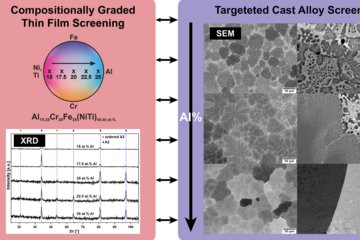All genres
21.
Talk
Direct biocatalysis of methane from carbon dioxide by a lithotrophic archaeon. 2nd European meeting of the International Society for Microbial Electrochemistry and Technology, Alcalá de Henares (Madrid), Spain (2014)
22.
Talk
Electrochemical CO2 reduction: A Combinatorial High-Throughput Approach for Catalytic Activity, Stability, and Selectivity Investigations. Electrochemistry 2014, Mainz, Germany (2014)
23.
Talk
Electrochemical CO2 reduction: A Combinatorial High-Throughput Approach for Catalytic Activity, Stability, and Selectivity Investigations. 247th ACS National Meeting, Dallas, TX, USA (2014)
24.
Poster
Direct biocatalysis of methane from carbon dioxide by a lithtrophic archaeon. Electrochemistry 2014, Mainz, Germany (2014)
25.
Poster
Electrochemical CO2 Reduction A Combinatorial High-Throughput Approach for Catalytic Activity, Stability and Selectivity Investigations. International Symposium on Electrocatalysis: Explorations of the Volcano Landscape, Whistler, BC, Canada (2014)
26.
Poster
CO2 as a Feedstock for Electrochemical Fuel Production. CO2 - Conference on Carbon Dioxide as Feedstock for Chemicals and Polymers, Essen, Germany (2013)
27.
Thesis - PhD
Design of a Novel Electrochemical Activity and Selectivity Analysis Instrument. Dissertation, Ruhr-Universität Bochum, Bochum, Germany (2016)











